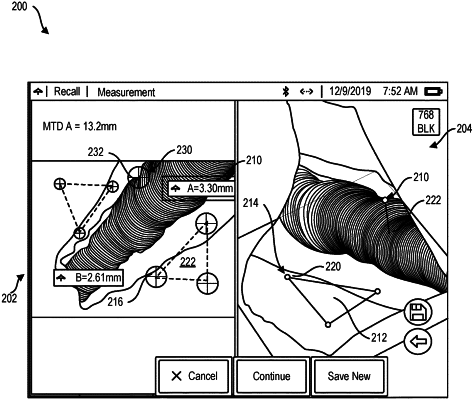| CPC G06F 3/04815 (2013.01) [G06F 3/04842 (2013.01); G06T 15/10 (2013.01); G06T 2200/24 (2013.01)] | 17 Claims |

|
1. A method comprising:
receiving data characterizing visual properties of a target surface extending in three dimensions, the visual properties of the target surface comprising color codes indicative of a state of an inspection target object comprising a portion of an industrial machine, the state of the inspection target object transitioning from a movable state to an active state or an inactive state;
rendering, in a graphical user interface display space, a first visual representation comprising a two-dimensional image of a first portion of the target surface, and a second visual representation comprising a three-dimensional representation of at least a subset of the first portion of the target surface included in the first visual representation;
receiving, based on a first user interaction with the inspection target object of the three-dimensional representation transitioned to the active state, a first user input indicative of a selection of a first location of the target surface;
rendering a first graphical object at a first target position in the three-dimensional representation and a second graphical object at a second target position in the two-dimensional image, wherein the first target position and the second target position are indicative of the first location of the target surface and wherein the first target position is automatically adjusted to re-center the first graphical object in the three-dimensional representation to facilitate access to location selectors;
receiving, based on a second user interaction with the three-dimensional representation, a second user input indicative of selection of two locations of the target surface using the location selectors; and
rendering, in the graphical user interface, a first value indicative of a straight-line distance between the two locations.
|